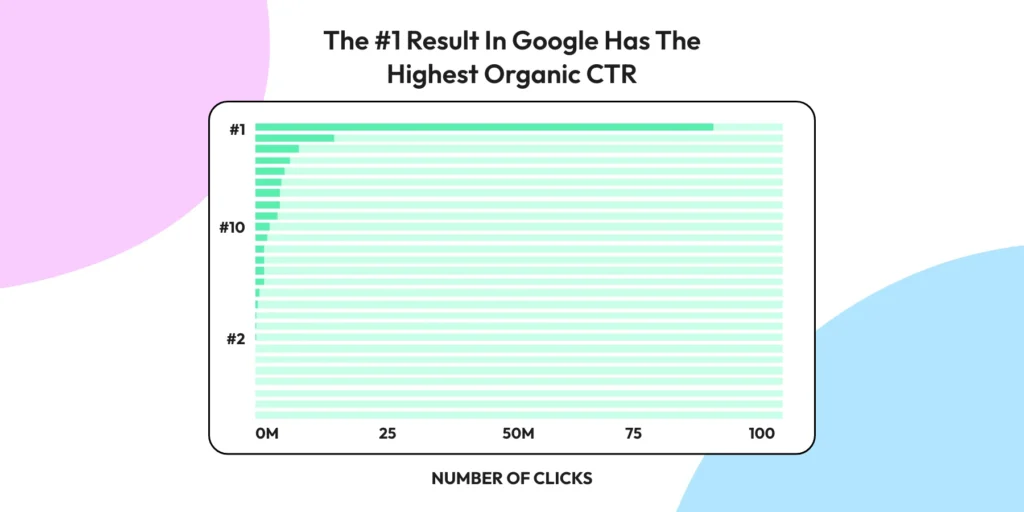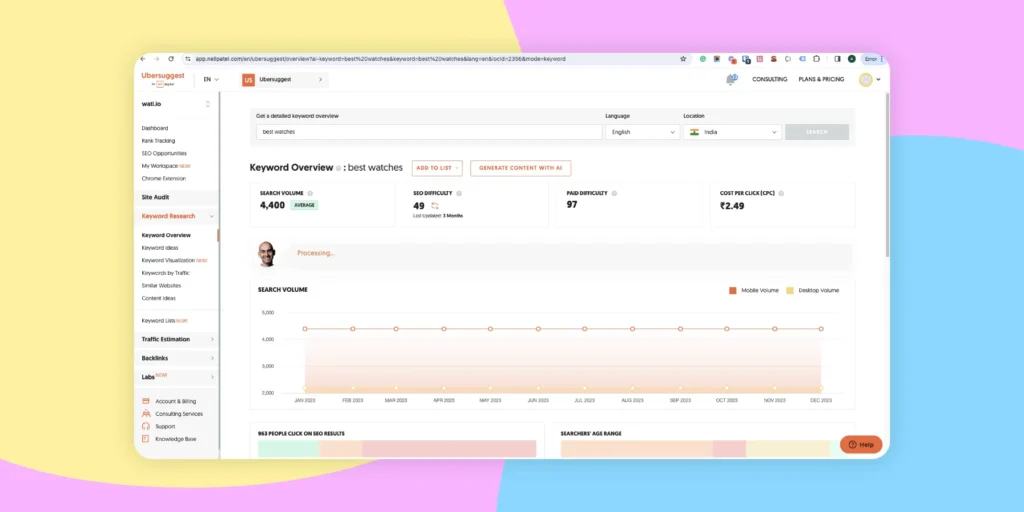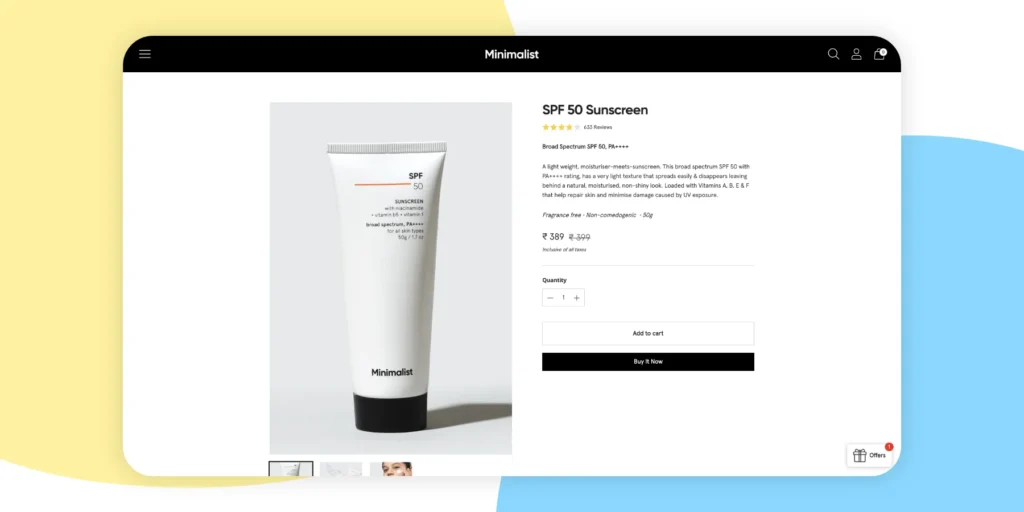-
-
FeaturesคุณสมบัติPenyelesaianRecursosFiturCaracterísticas精选功能功能特點المزايا
-
Solutionsโซลูชั่นPenyelesaianSoluçõesSolusiSoluciones解决方案解決方案الحلول
-
IntegrationsการผสานรวมIntegrasiIntegraçõesIntegrationsIntegraciones集成整合服務دمج مع تطبيقات أخرى
-
Affiliate/Partnersพันธมิตร/พันธมิตรทรัพยากรAfiliasi/Rakan KongsiAfiliados/ParceirosAfiliasi/MitraAfiliados/Partners联盟/合作伙伴聯盟/合作夥伴شريك
-
ResourcesจองการสาธิตSumberRecursosSumber dayaRecursosالموارد資源中心

The Only Shopify SEO Guide You Need in 2025!
As an ambitious entrepreneur, you know the importance of standing out in the digital marketplace. That’s exactly why this Shopify SEO guide is crafted for you—to help boost your website SEO and ensure your online store soars in search engine rankings. With the right strategies and some know-how, you’ll attract more customers and climb the ranks in no time. Let’s explore how to enhance your store’s visibility and traffic together.
Understanding the Basics of Shopify SEO
Understanding how Shopify SEO works is essential if you’re entering the dynamic e-commerce world. Let’s start by exploring the basic concepts key to a successful online presence, before moving on to more advanced strategies and tactics.
What is Shopify SEO?
Shopify SEO is the tailored approach towards optimizing your Shopify store for search engines. According to the Shopify Help Center, this involves several techniques to enhance your store’s visibility in search engine results. The ultimate goal? To drive more organic traffic and boost sales without solely relying on paid advertising. As a store owner, mastering this aspect can set the stage for your business’s success in the digital space.
Also Read: Customer Retention Strategies for Shopify Business Owners
The Importance of SEO for Your Shopify Store

Why should SEO be a cornerstone of your online strategy?
A study from Oberlo underscores the impact: SEO can drastically diminish your customer acquisition costs while improving your brand’s long-term value. In the competitive Shopify e-commerce landscape, effective SEO strategies can be the key to standing out rather than remaining unnoticed.
| Aspect of Shopify SEO | Benefits | Strategic Actions |
| Keyword Optimization | Attract targeted traffic | Research and integrate high-intent keywords |
| On-Page Elements | Improve click-through rate | Optimize title tags, meta descriptions |
| Technical SEO | Enhance user experience | Improve page speed, mobile responsiveness |
| Content Marketing | Establish brand authority | Create value-driven blog posts, guides |
| Link Building | Increase domain credibility | Engage in outreach and secure quality backlinks |
Shopify SEO Guide: Crafting Your Strategy
Starting SEO optimization for your Shopify store can be a transformative move for your business. A strong SEO strategy can boost your website’s visibility, increasing traffic and conversions. Let’s explore two critical aspects of Shopify SEO: keyword research and competitive analysis.
Keyword Research for Shopify

Understanding customer search behaviour is essential when selecting keywords for your Shopify store. Leveraging tools like Ahrefs or Ubersuggest can help you discover the phrases and questions your target market is typing into search engines.
Effective keyword research enables you to optimise product descriptions, blog content, and meta tags, ensuring your offerings align with user intent and search relevance. Here are some Shopify SEO tips for effective keyword implementation:
- Focus on long-tail keywords that specific customer segments are likely to use.
- Include primary keywords in your product titles and descriptions.
- Use keywords naturally to maintain readability and avoid keyword stuffing.
- Remember to optimize your images with keywords in the alt text.
Remember, relevance is key. Choosing keywords that match your product’s value proposition can improve your chances of ranking higher in search results and driving targeted traffic to your store.
Also Read: 13 Proven Ways To Increase Your Shopify Conversion Rate
Competitive Analysis in the Shopify Ecosystem

To further hone your Shopify SEO optimization, it is crucial to perform a competitive analysis. Understanding what your competitors are doing can provide valuable insights into what SEO strategies are working in your niche. Tools like SEMrush facilitate a deep dive into competitors’ keyword usage, backlink profiles, and content marketing efforts. This analysis can reveal their strategy gaps, presenting opportunities for your store to stand out.
| Competitor SEO Element | Insights Gained | How It Benefits Your Shopify Store |
| Keywords | Popular keywords your competitors rank for | Identify target keywords to improve your own rankings |
| Backlinks | Where competitors are acquiring backlinks | Identify target keywords to improve your rankings |
| Content Strategy | Types of content that drive traffic for competitors | Inform your content creation and marketing approach |
| Site Structure | How competitors organize their site navigation | Optimize your website’s navigation for better user experience |
By combining diligent keyword research with a thorough competitive analysis, you’ll be equipped to craft a Shopify SEO strategy that not only stands up to the competition but also captivates and converts your target audience.
On-Page SEO Tactics for Shopify Sites
Understanding and implementing on-page SEO tactics can place your e-commerce platform ahead of the competition when aiming to maximise your Shopify store’s potential.. Let’s explore the actionable steps you can take to amplify your Shopify website SEO and adhere to Shopify SEO best practices.
Optimizing Product Pages for Better Visibility
Product pages are the pillars of your Shopify store. For a start, ensure that your title tags are descriptive and keyword-rich, capturing the essence of the product while catering to search engines. Similarly, meta descriptions should concisely describe the product and persuade searchers to click through. High-quality images entice potential buyers and contribute to SEO when tagged with relevant alt text.

Incorporating SEO-Friendly Content
Content on your Shopify site should always target what your audience is searching for. By adding long-tail keywords to your product descriptions and educational blog posts, you address specific customer queries. Moreover, regular updates with fresh, unique content will maintain site relevancy and encourage recurring visits.

Using Tags and Collections Effectively
Tags and collections on Shopify don’t just simplify the shopping experience—they are instrumental in structuring your website for enhanced SEO performance. Organizing products into clear categories improves site navigation for users and search engine crawlers. To illustrate, here’s how you might categorize a range of eco-friendly products:
| Collection | Tags | Example Products |
| Eco-Friendly Kitchen | Biodegradable, Reusable, Sustainable | Bamboo Cutlery, Reusable Food Wraps |
| Green Cleaning Supplies | Non-toxic, Organic, Eco-safe | All-Purpose Cleaners, Microfiber Cloths |
| Eco-Friendly Office | Recycled, Plant-based, Energy-efficient | Recycled Paper, Solar Chargers |
Remember, whether you’re crafting compelling product descriptions or categorizing items into collections, the ultimate goal is to align with shopify SEO best practices to ensure your site garners visibility and traffic. By taking these steps, you take control of on-page SEO and set your Shopify venture on a path to success.

Technical SEO: Ensuring a Solid Foundation
Optimizing your Shopify store involves more than just making superficial adjustments. To align with Shopify SEO best practices, jumping into the technical details that search engines value is crucial. A solid technical SEO setup boosts your store’s ranking and greatly enhances the user experience. Let’s explore the technical changes you can implement to enhance your Shopify store’s SEO.
Enhancing Site Speed and Performance
Faster load times are about keeping visitors happy and a crucial factor in SEO ranking. Tools like Google PageSpeed Insights can give you actionable insights on your Shopify store’s performance. With this feedback, you can make the necessary tweaks to optimize your store’s loading speed, directly impacting your site’s visibility and user engagement.

Mobile Optimization for Shopify Stores
In today’s mobile-first world, ensuring your Shopify store is optimized for mobile devices is non-negotiable. A mobile-friendly site translates to a better shopping experience, leading to increased engagement and, potentially, more sales. Google Developers suggest that mobile optimization is not just about visuals; responsive design and functionality are critical elements contributing to mobile SEO.
Managing Redirects and Broken Links
A well-maintained site structure is key to preserving your store’s credibility with search engines. Yoast SEO highlights the importance of fixing broken links and implementing the right redirects. This favours the site’s user experience and signals to search engines that your store is reliable, secure, and well-organized—an essential aspect of Shopify SEO optimization.
| SEO Element | Importance | Tools for Optimization |
| Site Speed | Critical for SEO ranking and user experience | Google PageSpeed Insights, GTmetrix |
| Mobile-Friendliness | Essential for engaging mobile users and SEO | Google Mobile-Friendly Test, Responsive Design Checker |
| Redirects and Link Management | Improves site trust and structure for search engines | Yoast SEO, Broken Link Checker |
Boosting SEO with Shopify Apps and Tools
When you’re looking to elevate your Shopify store’s SEO, it’s essential to capitalize on the powerful Shopify SEO tools and Shopify SEO plugins available. These indispensable resources serve to automate your SEO efforts, making the process more efficient while ensuring you’re equipped to tackle the latest SEO challenges. Let’s explore some of these transformative tools to see how they can streamline your optimization efforts.
| SEO Tool | Main Features | Benefits for Your Shopify Store |
| Plug in SEO | On-page SEO analysis, keyword suggestions, and issue detection | Improves page optimization, identifies SEO issues for quick resolution |
| SEO Manager | Real-time keyword tracking, Google result simulator, SEO issue scanning | Tracks SEO success and simulates Google search results for testing |
| Smart SEO | Automated meta tag management, image alt text optimization | Saves time with automation and enhances image searchability |
| SEO Booster | SEO diagnosis, automated issue fixing, and daily monitoring | Keeps SEO health in check and mitigates issues promptly |
Do check out our Shopify app to drive sales,support and marketing conversations on WhatsApp
Incorporating Shopify SEO plugins into your strategy bolsters your site’s visibility and offers a sustained competitive edge. Regular use and navigation of these tools can reveal deep insights into your site’s performance and unearth opportunities to keep your store astride or ahead of ever-shifting SEO trends. Choose the ones that align best with your goals, and watch your organic traffic soar.

Link Building Strategies for Shopify Store Owners
Link building is a critical aspect of your Shopify SEO strategies, as it is directly associated with how search engines assess your site’s authority and relevance. High-quality backlinks not only bolster your store’s domain authority but also lead to increased traffic—a testament to the trust and credibility of your Shopify store in the digital marketplace.
Outreach and Partnerships
Successful link-building is rooted in effective outreach and fostering partnerships. HubSpot underscores the importance of connecting with industry influencers, bloggers, and business owners to create mutually beneficial relationships. You can encourage these partners to link back to your site by offering valuable content or features. This secures authoritative backlinks and extends your reach to their audience, seamlessly integrating into your broader Shopify SEO guide for market expansion.
Leveraging Social Media for Backlinks
In social media, the power of shareable content can’t be underestimated in generating backlinks. Social Media Examiner highlights innovative strategies for content marketing across platforms to captivate audiences and stimulate shares, thus earning backlinks organically. Although links from social media are typically ‘nofollow’, they play a significant role in driving traffic and enhancing brand visibility, pivotal factors contributing to your site’s SEO performance.

Shopify SEO Best Practices
As an online retailer on Shopify, you’re committed to boosting your store’s visibility and drawing in more customers. To stay ahead of the curve, keeping pace with best SEO practices tailored for Shopify platforms is essential. Let’s explore some of the finest Shopify SEO tips and integrate elements from a comprehensive Shopify SEO checklist to propel your store to new heights.
Regular Content Updates
Keeping your content fresh isn’t just about maintaining the interest of your audience—it’s also a critical component of SEO success. Experts advise that a regular refresh of your website’s content can substantially affect your store’s relevance, enhancing engagement. Think of each update as an opportunity to give your store a new lease on life and give visitors a reason to return for more.

User Experience and SEO
It’s becoming increasingly clear that a store’s user experience (UX) is intertwined with its SEO performance. Improving how visitors interact with your site, from navigation to page loading speed, keeps customers satisfied and signals to search engines that your site is of high quality. This commitment to UX could lead to better rankings and, importantly, happier customers.

Evaluating and Measuring Your SEO Success
Finally, it’s imperative to assess your SEO strategies’ impact continually. By identifying the right metrics and employing precise tools, you can glean insights into what’s working and what’s not. Analyzing such data allows for informed adjustments to your approach, ensuring your SEO efforts are as effective as possible. Remember, SEO is not a one-time project but an ongoing journey to keep your Shopify store thriving.
Using Analytics to Drive Your Shopify SEO Efforts
Dissecting your Shopify store’s performance through analytics is not just about numbers—it’s about discovering the narrative your data is telling. Specifically, you can harness this wealth of information to fuel your Shopify SEO optimization endeavours and make informed decisions that propel your business forward.
Understanding Shopify Analytics
Shopify provides a comprehensive analytics dashboard that unlocks insights into your customers’ shopping habits. Leverage this feature to identify what’s working and what’s not, ensuring your SEO tactics align with actual user behaviour. By understanding the intricacies of Shopify analytics, you can effectively fine-tune your approach to SEO for Shopify and enhance your site’s performance.
Tracking Keyword Rankings and Traffic Sources
Knowing where your Shopify store stands regarding keyword rankings and the diversity of traffic sources is crucial. Are your customers finding you through search engines, social media, or direct visits? By monitoring these metrics, you can pinpoint which SEO strategies yield results and where there’s room for improvement. Adjust your tactics to boost visibility and drive targeted traffic to your store.
Key Performance Indicators (KPIs) for Your SEO Strategy
To effectively gauge the success of your SEO efforts, you need to track the right KPIs. These indicators offer actionable insights and help maintain the trajectory of your campaign. Below is a table of essential KPIs that should be on your radar:
| KPI | Description | Why It Matters |
| Conversion Rate | The percentage of visitors who make a purchase | Indicates the effectiveness of your SEO in driving sales |
| Bounce Rate | The percentage of visitors who navigate away after viewing only one page | Reflects user engagement and the relevance of your content |
| Organic Sessions | The number of visits from organic search | Shows the reach and impact of your SEO activities |
By consistently monitoring these KPIs, you can ensure that your Shopify SEO optimization strategy remains aligned with your store’s performance goals, leading to more effective decision-making and sustained growth.
Conclusion
Your journey towards SEO refinement is ongoing. To maintain the momentum, routinely audit your store with your Shopify SEO checklist, looking for new opportunities to elevate your store’s rank. Employ the analytics tools at your disposal to monitor and tweak your strategy, ensuring alignment with the dynamic SEO landscape. By consistently applying these practices, your Shopify site is set to thrive amidst the competitive e-commerce frontiers of India.
Frequently Asked Questions
What is Shopify SEO?
Shopify SEO is the process of optimizing your Shopify store to increase its visibility in search engine results pages (SERPs), drive more organic traffic, and ultimately boost sales. This involves tweaking various elements of your site, including keywords, content, site structure, and technical aspects.
Why is SEO important for my Shopify store?
SEO is vital for your Shopify store because it helps reduce customer acquisition costs and increases the long-term brand equity. It’s an efficient way to reach your target audience without relying solely on paid advertising, thereby allowing for more sustainable growth.
How do I perform keyword research for my Shopify site?
You can perform keyword research by using tools like Ahrefs or Google Keyword Planner to find keywords that are relevant to your products and content. Look for terms that your potential customers are likely to use when searching for products similar to yours, and then incorporate those keywords into your site’s content, product descriptions, and tags.
Why should I do a competitive analysis in the Shopify ecosystem?
Conducting a competitive analysis in the Shopify ecosystem allows you to understand what SEO strategies your competitors are using and how you can differentiate your store. Tools like SEMrush can provide insights into the keywords they rank for, the structure of their site, and their backlink profile. This information can help you fine-tune your own SEO strategy.
How can I optimize my Shopify product pages for better visibility?
To optimize your Shopify product pages, improve your title tags, make sure your meta descriptions are compelling, use high-quality images, and ensure that your product descriptions contain relevant keywords. Providing detailed product information and optimizing the structure of your page can also help improve visibility.
What does incorporating SEO-friendly content on my Shopify site mean?
Incorporating SEO-friendly content means creating articles, blog posts, and product descriptions that are written to rank well in search engines. This involves using the right keywords, creating valuable content that answers customer queries, and making sure that your text is well-structured and readable.
How should I use tags and collections on my Shopify site?
Use tags and collections to organize your products and content in a way that makes it easy for customers to find what they’re looking for. This also helps search engines understand the structure of your site better. Make sure that your collections have descriptive titles and include keywords that people might use when searching for the types of products you sell.
What are some technical SEO tactics I should consider for my Shopify store?
For technical SEO, ensure that your site loads quickly, as speed is a ranking factor. Use tools like Google PageSpeed Insights to identify improvements. Ensure your store is mobile-optimized, as many users shop on mobile devices. Regularly check for and fix broken links, and properly set up redirects to avoid losing traffic.
How can Shopify apps and tools boost my SEO efforts?
Shopify SEO apps and tools can help automate and simplify the optimization process. They can assist with keyword research, monitor site performance, handle technical issues, and provide recommendations to further improve your ranking in search engines.
What are some effective link-building strategies for my Shopify store?
Effective link-building strategies include reaching out to bloggers and influencers to feature your products, forming partnerships with other businesses for mutual promotion, and leveraging social media to share content that encourages backlinks. Quality links from reputable sites can significantly enhance your store’s authority and search ranking.
What best practices should I follow for Shopify SEO?
Best practices for Shopify SEO include regularly updating your content to keep it fresh and relevant, optimizing the user experience of your store for better engagement and conversions, and monitoring key performance indicators (KPIs) to measure the success of your SEO efforts and make necessary adjustments.
How can I use analytics to improve my Shopify SEO strategy?
Use Shopify analytics to gain insights into customer behavior and tailor your SEO strategy based on data. Track keyword rankings and traffic sources to understand your SEO performance. Focus on essential SEO KPIs, such as conversion rates, bounce rates, and organic sessions, to ensure your efforts are leading to tangible results.
Latest Comments